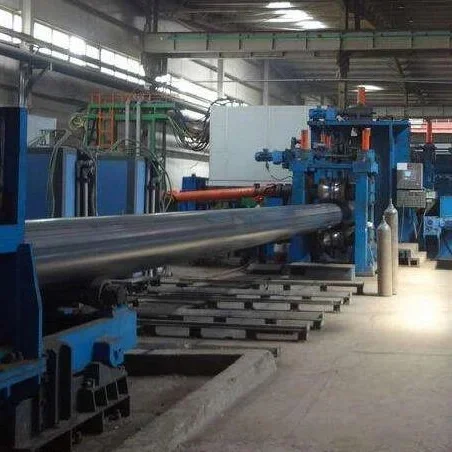Common defects and prevention of high frequency welded pipe
High frequency welded pipe is a common steel pipe product, which has the advantages of high strength, corrosion resistance and wear resistance, and is widely used in construction, machinery, automobile, aerospace and other fields. However, in the production process, high frequency welded pipe often has some defects, such as weld cracks, pores, slag inclusions, etc., which seriously affect the quality and service life of the product. Therefore, this article will discuss the common defects and prevention methods of high frequency welded pipe.

Weld crack
Weld crack is one of the common defects in the production of high frequency welded pipe. The main reason is that the stress generated during the welding process exceeds the bearing capacity of the material, resulting in cracks in the weld. In order to avoid weld cracks, the following preventive measures can be taken:
1. Control the welding temperature and speed to avoid overheating or too fast welding speed.
2. Select the appropriate welding material and welding process to ensure the welding quality.
3. Adopt measures such as preheating and post-heat treatment to reduce welding stress.
Stomata
Porosity is another common defect in the production of high frequency welded pipe, the main reason is that the gas is not completely exhausted during the welding process, resulting in the formation of air bubbles. To avoid blowholes, the following precautions can be taken:
1. Control the welding current and voltage to avoid excessive gas generation.
2. Select the appropriate welding material and welding process to ensure the welding quality.
3. Adopt measures such as preheating and post-heat treatment to reduce welding stress.
Slag
Slag inclusion is another common defect in the production of high frequency welded pipe. The main reason is that the impurities and pollutants in the welding area cannot be completely removed during the welding process, resulting in the inclusion of slag and oxides in the weld. In order to avoid the generation of slag inclusions, the following preventive measures can be taken:
1. Clean the welding area to ensure that the welding area is clean and free of impurities.
2. Select the appropriate welding material and welding process to ensure the welding quality.
3. Adopt measures such as preheating and post-heat treatment to reduce welding stress.
To sum up, the quality problems of high frequency welded pipe mainly focus on weld cracks, pores, and slag inclusions. In order to avoid the occurrence of these defects, a series of preventive measures need to be taken, including controlling the welding temperature and speed, selecting appropriate welding materials and welding processes, and adopting preheating and post-heat treatment measures. Only in this way can the quality and service life of high frequency welded pipe be guaranteed and meet the needs of various industrial fields.
Methods to eliminate welding residual stress
Easy to ignore problems in steel pipe welding
The welding process of welded steel pipe
How to avoid common welding defects
Causes and preventive measures of local deformation in welding
How to control the hardness of the weld during welding?
What are the factors that affect the quality of high-frequency welded pipe?






